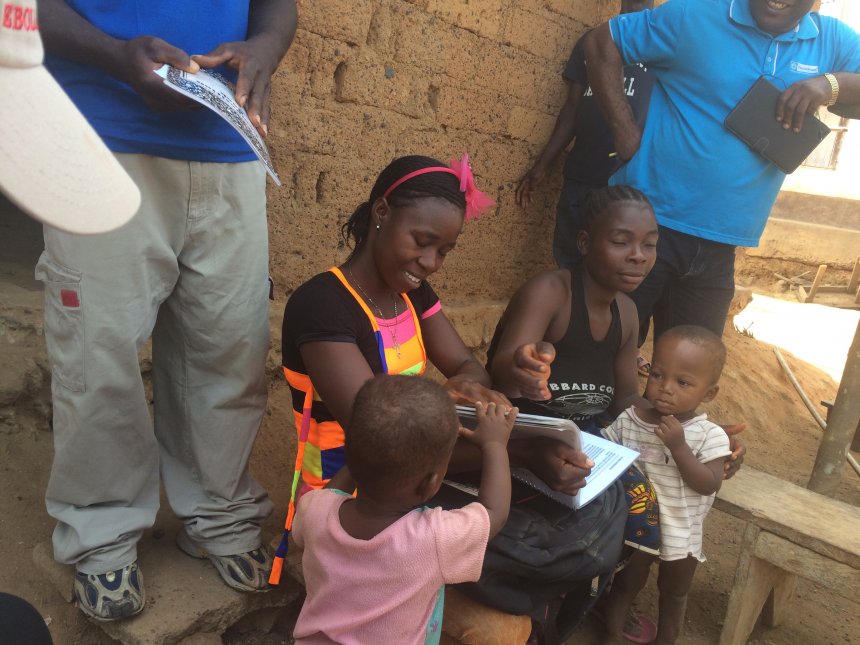This blog originally appeared on the Health System Global website.
Universal Health coverage (UHC) aims to create a system that provides all people with the health services they need, of sufficient quality to be effective, while also ensuring that the use of these services does not expose the user to financial hardship. Within this, addressing the unique health needs and barriers to access for men and women, boys and girls is pertinent. Further, as gender-based differences exist in access to, and control of, household resources, power and decision-making within and outside the home, and roles and responsibilities within the family, the community and the labor market, gender inclusivity in supporting systems that promote UHC attainment cannot be overemphasized.
Applying a gender lens is thus critical in developing health systems and policies that strive to meet UHC, especially as we consider strategies that strengthen gender equity in the deployment of the health workforce including community health workers (CHWs) needed to meet the UHC goals. Gender remains a central piece at the intersection between education, health and women’s empowerment in the sustainable development goals (SDGs) and the push for attaining UHC.

Health sector gender-inclusive policies: are they enough?
Musu* (pictured above) is a trained community health volunteer (CHV) in a community in Nimba county, Liberia. She provides integrated community case management of childhood illness for children under five along with other preventive and health promotive services in her community. Because Musu has completed high school she is one of the few females in many communities in Liberia who will be eligible to be trained as a Community Health Assistant (CHA) – a newly established community health cadre being deployed under Liberia’s revised Community Health Policy launched in July of 2016. CHAs are well-trained and supervised community health workers (CHWs) with standardized remuneration and well integrated in to the existing and planned health sector investments. Although Liberia’s new community health policy is one of the few community health policies that explicitly state a preference for females to be enlisted into the professionalized cadre of CHWs, the societal barriers (e.g. low status of females), that limit women’s and girls’ access to education, social capital, resources and skills persist and hamper the implementation of this policy.
CHVs like Musu are essential for achieving UHC in the wake of scarce human resources for health – current trends indicate that there will be a deficit of 18 million health workers by 2030 to achieve and sustain UHC. CHWs are crucial to eliminating the barriers for preventive and curative services to reach remote and vulnerable underserved populations thus facilitating progress towards UHC attainment. Furthermore, investing in CHWs yields additional societal benefits of increasing household income and promoting women’s empowerment, and this is particularly relevant in contexts where there are explicit policies promoting the enlistment of females for paid CHW cadres.
A recent United States Agency for International (USAID) flagship Maternal and Child Survival Program review of community health policies and related documents from 22 USAID priority countries for maternal and child health, revealed that gender was a key documented selection criteria for CHWS. Of the 53 CHW cadres spread across these 22 countries:
-
Gender was a key selection criteria for 29 CHW cadres across 15 countries,
-
10 cadres were required to be female, such as midwives and those who can access households more easily as women because of cultural and sometimes religious appropriateness,
-
Four of 14 instances where males and females where equally eligible, preference was given to women to encourage female leadership,
-
For 11 cadres, guidance documents noted that men and women were equitability selected in order to promote gender equality.
Despite these seemingly favorable policies that give preference to females to be enrolled in to the community health workforce (e.g. CHA in Liberia, health extension workers in Ethiopia, etc.), actualization of these laudable strategies are fraught with limitations. In contexts like Liberia, with low female literacy levels and very high female drop-out rates in basic education getting the candidates to fulfill these roles remain challenging given that nearly two thirds of the world’s illiterate adults are women. Empowering women and giving them equal rights to education will help to increase the number of females that are eligible to be enrolled in to the CHW cadres that will help to achieve UHC. Addressing these gaps in gender equality and women’s rights calls for a multi-sectoral effort.
Thus multi-sectoral, gender-inclusive policies (not only health-sector based policies) are relevant and needed for promoting gender equity in the community health force and their role in health systems development. Going beyond the policies efforts should include sensitizing the often parochial societies on the importance and benefits of female education, women empowerment and gender equality. We need to also ensure that universal education is truly accessible to girls and women in order to position them to be enlisted as CHWs.
* not her real name
Disclaimer: The contents are the responsibility of the author and do not necessarily reflect the views of USAID or the United States Government.
